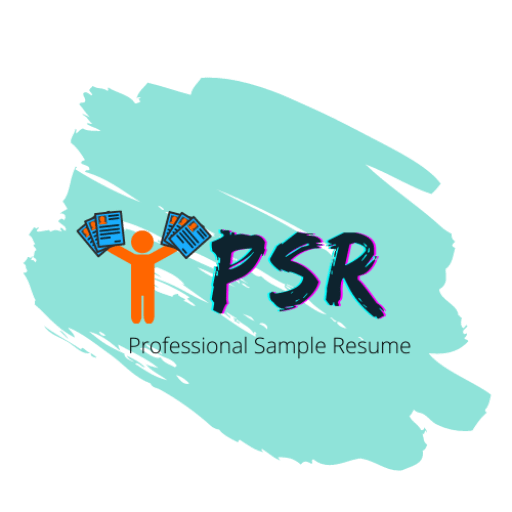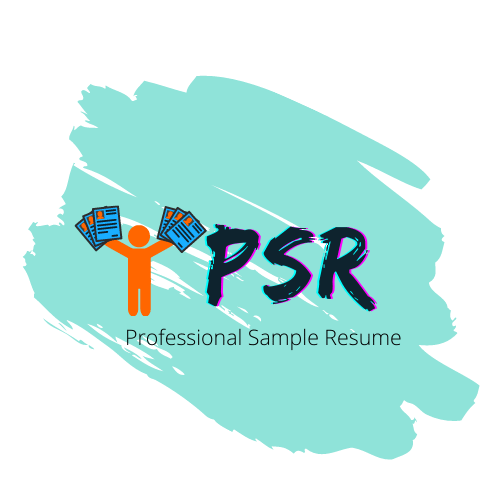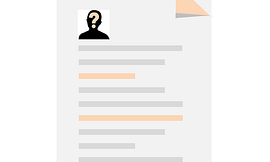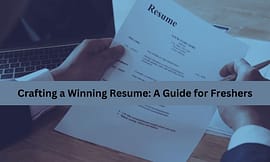Reading Lists
10 Best Resume Fonts For Resume Writing: Standard Size Font
According to our HR statistics survey, recruiters and recruiting managers search your resume for 7 seconds at first. It takes the average person almost as long to read these two words. The font you use must be readable. Here are some of our suggestions:
Resume Font Size:
For resumes, the minimum font size is 11 or12 points in a classic, easily readable font. The use of larger fonts helps to emphasise your name and section headings. If the content won’t fit on one tab, use a sans-serif font at 10 stages, but this is the smallest font size you can use.
Most Common Resume Font
The most widely-used font is black Times New Roman at a scale of 12 points.
Cambria, Georgia, Garamond, Book Antiqua, and Didot are examples of serif fonts with tails that fit well.
Calibri, Helvetica, Verdana, Trebuchet MS, and Lato are examples of sans serif fonts that perform well.
To highlight essential details such as the name and section headings, use bolding, italicizing, and CAPITALIZING, but remain clear.
You May Also read: 5 Resume Mistakes To Avoid To Get into a Job Interview
Calibri
Microsoft commissioned Lucas de Groot, a Dutch type designer, to create Calibri to replace Times New Roman as the default font for Office. It’s a new font that aims to optimize relatability by avoiding dated serifs while avoiding the extreme flourish of other modern fonts—ideal for today’s resumes.
Pros
- When a recruiting manager opens your resume, Calibri will normally make correctly as the default font. It’s a professional and easy-to-read font that received the Type Directors Club’s TDC2 2005 Type System competition.
Cons
- Since Calibri is the default font, it’s likely that other work seekers will use it as well, letting the resume blend in.
Cambria
Cambria, like Calibri, was developed in 2004 after a Dutchman was commissioned by Microsoft. Microsoft says that it was “designed for on-screen reading and to look fine when written at small sizes” because of its serifs (those little lines at the end of each stroke in a letter; we’ll get to them soon). As a result, it’s an excellent option for the quality of your resume and cover letter.
Pros
- Cambria makes it simple for readers to decode small text sizes easily.
Cons
- It is sometimes referred to as “traditional,” which can make it unsuitable for more contemporary positions.
You may also Read: 9 Tips and Examples for Writing a Killer Career Objective in Resume
Helvetica
Helvetica is a neo-grotesque typeface designed by a Swiss artist. Originally known as Neue Haas Grotesk, it was quickly approved by Linotype and renamed to imitate the Latin term for Switzerland, “Helvetia.” It’s a beautiful, easy-to-read sans-serif font that’s still common in the advertising industry. Helvetica is used for signage for both the New York City subway system and large companies such as BMW.
Pros
- Many practitioners consider Helvetica to be one of the most elegant sans-serif fonts available. A fantastic font for a CV!
Cons
- While Helvetica comes preloaded on Macs, it is not classified under fonts in Microsoft Word.
Georgia
Georgia, which was created for Microsoft in the early 1990s and is now one of the most widely used fonts today, is used by the New York Times online as well as many large companies including Yahoo, Amazon, and Twitter. Georgia is an easy-to-read font for internet use, making it suitable for sending your resume as a PDF.
Pros
- Georgia can be viewed on a number of writing sites. It’s easy to use and a decent alternative for serif typefaces like Times New Roman. It was re-released and revised in 2013, so it is current.
Cons
- Due to Georgia’s success, it could be difficult to stand out. It was also influenced by 19th-century Scotch Roman styles.
Verdana
Verdana was developed by Matthew Carter for Microsoft as the sans-serif sister to Georgia. He created the font to be easy to read on computer screens in small print. Verdana continues to be one of the most used technical fonts for resumes, CVs, and cover letters.
Pros
- Because it was designed for small-print legibility, it’s ideal for job hunters who like to cram more information onto their resumes.
Cons
- If you’re looking for a “wow” CV font, look elsewhere. Verdana looks very similar to Arial, and Arial looks very similar to Helvetica.
You may also read: 5 Proven Strategy to Write a Winning Resume
Garamond
Garamond is a font family with a long tradition, with styles dating back to the 15th and 16th centuries. Garamond is also described as timeless. Jean Jannon later developed a typeface that resembles Garamond in most digital representations. Monotype’s 1922 edition is used with Microsoft items and is the most commonly used in this typography series.
Pros
- Garamond is a favourite of designers and ad managers. It fits all of the standards for a good resume font: it’s easy to read, appealing, and elegant, and it’s not something that everybody and their mother uses.
Cons
- Some may argue that Garamond’s timelessness is just a more positive way of saying it’s old; after all, it’s from the 1400s
Trebuchet MS
A trebuchet is a mediaeval siege engine that fires slow, excruciating death projectiles (such as buckets of stones or dead bodies to disperse disease) over long distances and by defending walls. “I thought that would be a perfect name for a font that rockets words around the Internet,” says Vincent Connare. Connare is a font specialist, having developed the world-famous (but not resume-friendly) Comic Sans font.
Pros
- Trebuchet was launched as one of Microsoft’s key web fonts. And rivals like Google Docs make it easy to search.
Cons
- You’ll have to pay for Trebuchet Pro if you want to use any of the Trebuchet MS font’s extra features, such as small caps or text figures.
Lato
The Lato font was created by ukasz Dziedzic, a Polish typeface artist, for a big corporate customer, which is why he wanted it to be both serious and fun. Because of its dual existence, it had the “feeling of summer,” so he called it after the Polish word for summer.
Pros
- You can import and use it for free since it is an open source font (SIL Open Font License). Lato is also a business font, so you can use it on your resume with ease. It is publicly accessible in the Google Font library.
Cons
- Lato isn’t a regular font for Microsoft Word. It’s likely that when certain recruiting managers open your resume, it won’t load.
Book Antiqua
You’d be mistaken if you thought new resume models should use Web Nova or Selfie Futura instead of this typeface. The Microsoft clone of the industry-standard Palatino font, Book Antiqua, is one of the best serif fonts for resumes.
Pros
- Since it is a Microsoft clone of Palatino, it is compatible with a wide range of operating systems and office applications.
Cons
- Since Palatino is built on Renaissance humanist models, it can make your resume seem antiquated.
Didot
Firmin Didot designed Didot, an elegant font, shortly before the French Revolution. Although it isn’t as old and traditional as Garamond, it was created during the Enlightenment and Marie Antoinette’s reign, so it’s a decent choice for a resume.
Pros
- Many professionals equate the font with fashion; Didot is used on the websites of Ralph Lauren and Marks & Spencer. If you have to go for the fancy, its charm makes it a good bet.
Cons
- If you want to use Didot on your resume, you’ll have to pay for it. When you use so much Didot on a list, it goes from being tastefully sophisticated to putting your resume in danger of ending up like Madame Déficit.



![Checklist: Job Applications for Employment [Step-by-Step Guide]](https://mly9jtuj6mmj.i.optimole.com/w:270/h:162/q:mauto/rt:fill/g:ce/f:best/https://professionalsampleresume.com/wp-content/uploads/2023/07/Mastering-The-Art-Of-Interview-Preparation-1.png)



